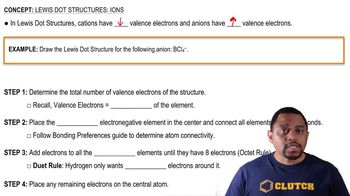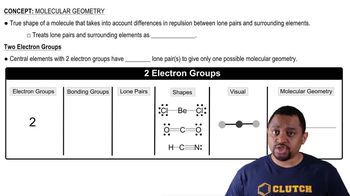Here are the essential concepts you must grasp in order to answer the question correctly.
Lewis Dot Structures
Lewis dot structures are diagrams that represent the valence electrons of atoms within a molecule. They illustrate how electrons are shared or transferred between atoms, helping to visualize bonding and lone pairs. For the sulfite ion (SO₃²⁻) and sulfur trioxide (SO₃), drawing their Lewis structures will reveal the arrangement of electrons and the connectivity of atoms.
Recommended video:
Lewis Dot Structures: Ions (Simplified) Concept 1
Molecular Geometry
Molecular geometry refers to the three-dimensional arrangement of atoms in a molecule. It is determined by the number of bonding pairs and lone pairs of electrons around the central atom, which influences the shape of the molecule. Understanding the molecular geometry of SO₃²⁻ and SO₃ is crucial for predicting their chemical behavior and reactivity.
Recommended video:
Molecular Geometry (Simplified) Concept 1
VSEPR Theory
Valence Shell Electron Pair Repulsion (VSEPR) theory is a model used to predict the geometry of molecules based on the repulsion between electron pairs. According to VSEPR, electron pairs will arrange themselves to minimize repulsion, leading to specific molecular shapes. This theory is essential for determining the molecular geometries of SO₃²⁻ and SO₃ after constructing their Lewis dot structures.
Recommended video:
 Verified step by step guidance
Verified step by step guidance


